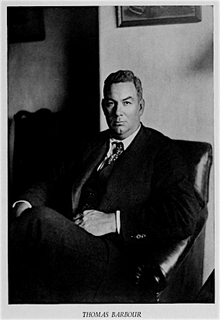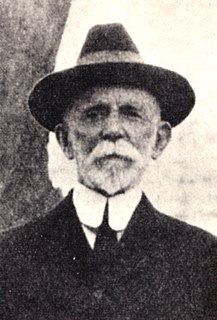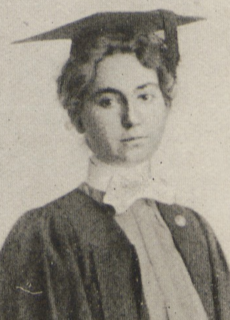Related Research Articles

Alexander Emmanuel Rodolphe Agassiz, son of Louis Agassiz and stepson of Elizabeth Cabot Agassiz, was an American scientist and engineer.

Jean Louis Rodolphe Agassiz FRS (For) FRSE was a Swiss-born American biologist and geologist who is recognized as a scholar of Earth's natural history.

Radcliffe College was a women's liberal arts college in Cambridge, Massachusetts, and functioned as the female coordinate institution for the all-male Harvard College. Considered founded in 1879, it was one of the Seven Sisters colleges and held the popular reputation of having a particularly intellectual, literary, and independent-minded female student body.

LeBaron Russell Briggs was an American educator. He was appointed the first Dean of Men at Harvard College, and subsequently served as dean of the faculty until he retired. He was concurrently president of Radcliffe College and the National Collegiate Athletic Association.

Ruth Dixon Turner was a pioneering U.S. marine biologist and malacologist. She was the world's expert on Teredinidae or shipworms, a taxonomic family of wood-boring bivalve mollusks which severely damage wooden marine installations.
University Park is the name given to the Pennsylvania State University's main campus located in both State College and College Township, Pennsylvania. The campus post office was designated "University Park, Pennsylvania" in 1953 by Penn State president Milton Eisenhower, after what was then Pennsylvania State College was upgraded to university status.

Currier House is one of twelve undergraduate residential Houses of Harvard College, in Cambridge, Massachusetts, United States. Opened in September 1970, it is named after Audrey Bruce Currier, a member of the Radcliffe College Class of 1956 who, along with her husband, was killed in a plane crash in 1967. The area was formerly used as housing for Radcliffe College, and as such the four towers of Currier House are named for distinguished alumnae of Radcliffe, including the author Barbara Tuchman. Along with Cabot House and Pforzheimer House, Currier is part of the former Radcliffe Quadrangle, known colloquially as simply "the Quad."

Addison Emery Verrill was an American invertebrate zoologist, museum curator and university professor.

Thomas Barbour was an American herpetologist. From 1927 until 1946, he was director of the Harvard Museum of Comparative Zoology (MCZ) founded in 1859 by Louis Agassiz at Harvard University in Cambridge, Massachusetts.

Harvard College, around which Harvard University eventually grew, was founded in 1636 in Cambridge, Massachusetts, making it the oldest institution of higher learning in the United States.

The Museum of Comparative Zoology is a zoology museum located on the grounds of Harvard University in Cambridge, Massachusetts. It is one of three natural-history research museums at Harvard, whose public face is the Harvard Museum of Natural History. Harvard MCZ's collections consist of some 21 million specimens, of which several thousand are on rotating display at the public museum. The current director of the MCZ is James Hanken, the Louis Agassiz Professor of Zoology at Harvard.

James Henry Emerton was an American arachnologist and illustrator.

Theodore Holmes Bullock is one of the founding fathers of neuroethology. During a career spanning nearly seven decades, this American academic was esteemed both as a pioneering and influential neuroscientist, examining the physiology and evolution of the nervous system across organizational levels, and as a champion of the comparative approach, studying species from nearly all major animal groups—coelenterates, annelids, arthropods, echinoderms, molluscs, and chordates.

Ida Henrietta Hyde was an American physiologist known for developing a micro-electrode powerful enough to stimulate tissue chemically or electronically, yet small enough to inject or remove tissue from a cell. Ida was never married and agnostic in her religious standing. She retired at the age in 63 in the year 1920. After her retirement, Ida traveled to several places, including Switzerland, Austria, Egypt, India, and several locations in Germany. On August 22, 1945 Ida Hyde died of a cerebral hemorrhage. Ida Hyde is the great-aunt of biochemist Arthur Pardee.
Isabel Pérez Farfante was a Cuban-born carcinologist. She was the first Cuban woman to receive her Ph.D. from an Ivy League school. She returned to Cuba from the United States only to be blacklisted by Fidel Castro's government. She and her family escaped Cuba, and she became one of the world's foremost zoologists studying prawns. She discovered large populations of shrimp off the coast of Cuba and published one of the most noted books on shrimps: "Penaeoid and Sergestoid Shrimps and Prawns of the World. Keys and Diagnoses for the Families and Genera."

Lucy Sprague Mitchell was an American educator and children's writer, and the founder of Bank Street College of Education.
Elisabeth Deichmann was a Danish-born American marine biologist.
Alfred Walter "Fuzz" Crompton is a South African paleontologist and zoologist.
Elizabeth Hodges Clark was an American museum assistant, secretary and scientific illustrator employed by the Harvard's Museum of Comparative Zoology (MCZ) from 1873 to at least 1910. As an assistant, Clark categorized marine specimens and, later, accepted a promotion to become the personal secretary to museum director Alexander Agassiz. A job which left Clark in charge of the day-to-day management of the MCZ when the younger Agassiz was afield.

Edith Nason Buckingham was an American zoologist, dog breeder, and chicken farmer. She was the first woman to earn a Ph.D. in zoology at Radcliffe College.
References
- 1 2 3 Tonn, Jenna (August 2017). "Extralaboratory Life: Gender Politics and Experimental Biology at Radcliffe College, 1894–1910". Gender & History. 29 (2): 329–358. doi:10.1111/1468-0424.12292.
- ↑ Radcliffe College Monographs. Ginn and Company. 1897.
annie henchman radcliffe.